Living in an apartment doesn’t mean you have to forgo the joys of pet ownership. While dogs and cats might require more space than your apartment can offer, reptiles can make excellent companions in smaller living environments. These fascinating creatures often require less space, produce minimal noise, and many species don’t need daily interaction, making them ideal for busy apartment dwellers. If you’re considering adding a scaly friend to your home, here’s a comprehensive guide to the top 10 reptiles that thrive in apartment settings, along with essential care information to ensure they live happy, healthy lives in your urban dwelling.
1. Leopard Geckos: The Friendly Beginner’s Choice
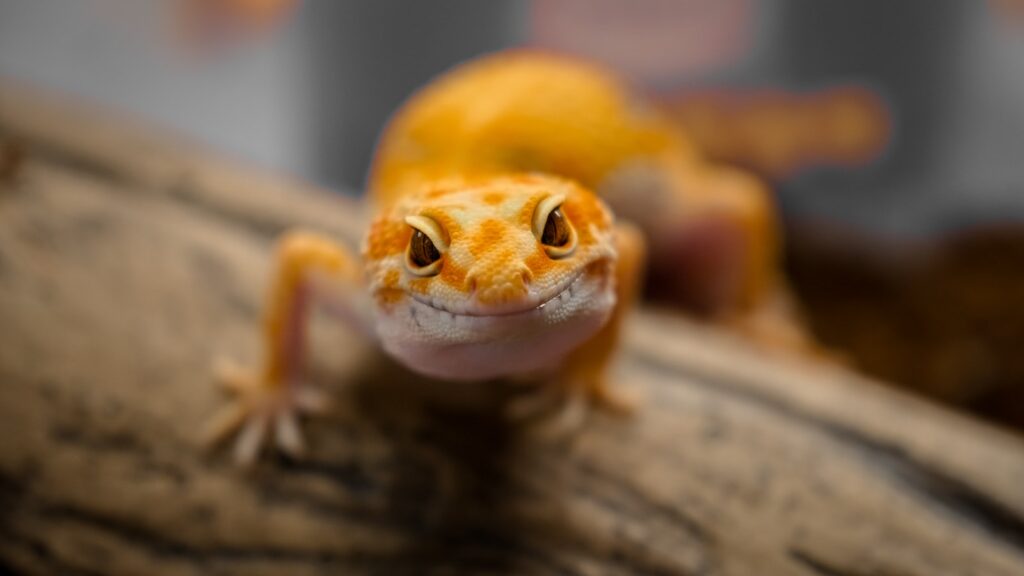
Leopard geckos have rightfully earned their reputation as one of the most apartment-friendly reptiles available to pet enthusiasts. These charming creatures typically grow to just 8-10 inches in length, meaning they require relatively modest enclosures that won’t overwhelm limited apartment space. Unlike many reptiles, leopard geckos are crepuscular, becoming most active during dawn and dusk, which aligns well with many working professionals’ schedules. Their docile temperament makes handling sessions enjoyable and stress-free, while their smiling faces and expressive personalities create an instant connection with owners. Perhaps most importantly for apartment living, leopard geckos are completely silent except for occasional soft chirping, ensuring you’ll never receive noise complaints from neighbors.
2. Crested Geckos: Low-Maintenance Climbers

Crested geckos represent an excellent choice for apartment dwellers seeking a visually striking yet manageable pet. These arboreal geckos thrive in vertical terrariums that utilize height rather than floor space, making them perfect for apartments where square footage is at a premium. Their care requirements are remarkably simple—they need no special lighting or heating equipment as long as your apartment maintains reasonable room temperatures between 72-78°F. Crested geckos primarily consume commercially available powder diets mixed with water, eliminating the need to store live insects in your limited space. Their gentle disposition and natural curiosity make them engaging pets, while their specialized toe pads allow them to perform impressive climbing feats that provide endless entertainment without taking up valuable floor space.
3. Ball Pythons: The Gentle Giants
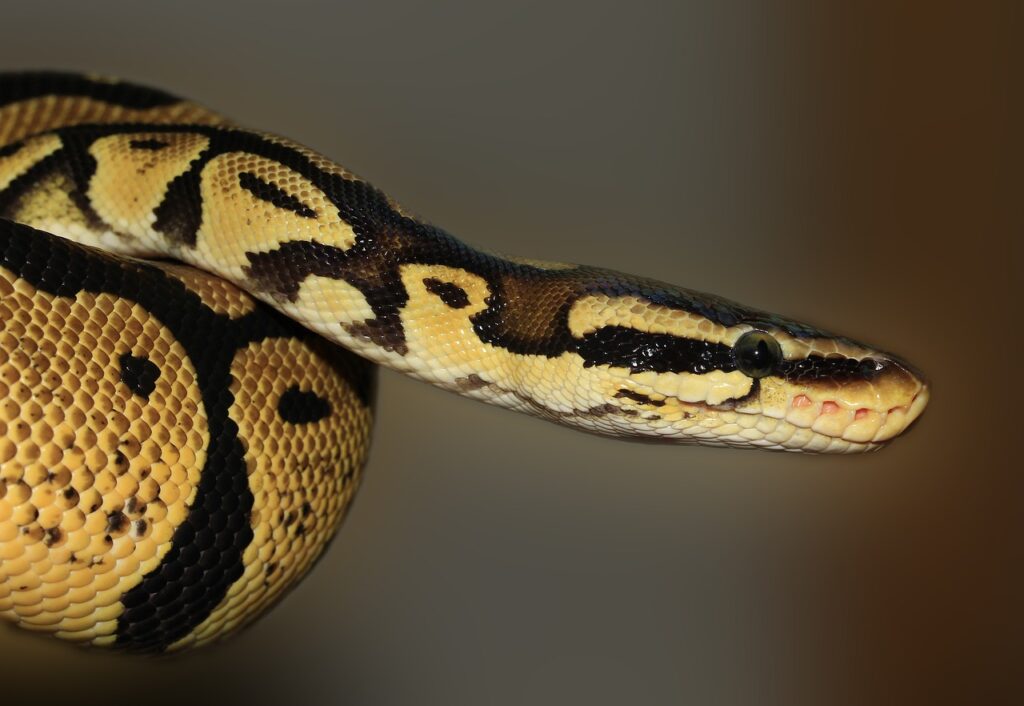
Despite common misconceptions about snakes, ball pythons are exceptionally calm and manageable reptiles that adapt beautifully to apartment living. These snakes earn their name from their defensive behavior of curling into a ball when stressed, but with proper handling, they become remarkably docile companions. A full-grown ball python typically reaches 3-5 feet, requiring a modestly-sized enclosure that can fit comfortably in an apartment setting without dominating the space. Their feeding schedule is particularly apartment-friendly, as adults typically eat just once every 1-2 weeks, reducing the amount of prey you’ll need to store in your limited freezer space. Ball pythons are also virtually silent and produce minimal waste compared to many traditional pets, making them excellent neighbors in multi-unit buildings where noise and odor concerns might otherwise limit pet options.
4. Bearded Dragons: Personable Desert Dwellers
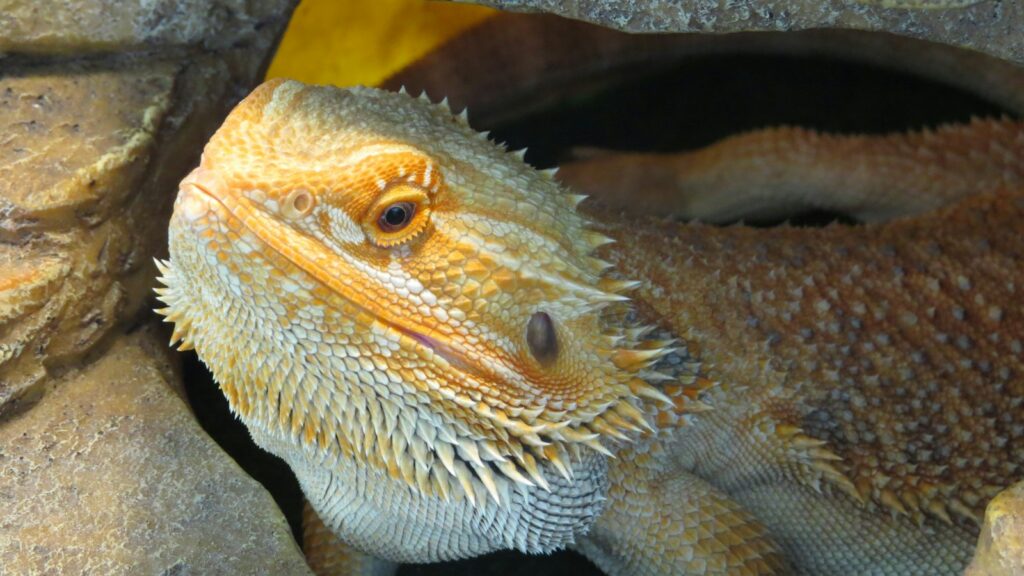
Bearded dragons have earned their popularity among apartment-dwelling reptile enthusiasts through their remarkably sociable nature and expressive personalities. These medium-sized lizards form genuine bonds with their caretakers, often recognizing their owners and even responding to their names with time and consistent interaction. Despite requiring a larger enclosure than some other apartment-friendly reptiles (a 40-gallon tank minimum for adults), their space needs remain manageable for most apartment settings when compared to traditional pets. Bearded dragons thrive on a diet that combines vegetables with insects, allowing for flexible feeding options that don’t require excessive storage space. Their diurnal nature means they’re active during daylight hours when most owners are home and awake, creating natural opportunities for enriching interaction and observation.
5. Corn Snakes: Colorful and Calm Companions
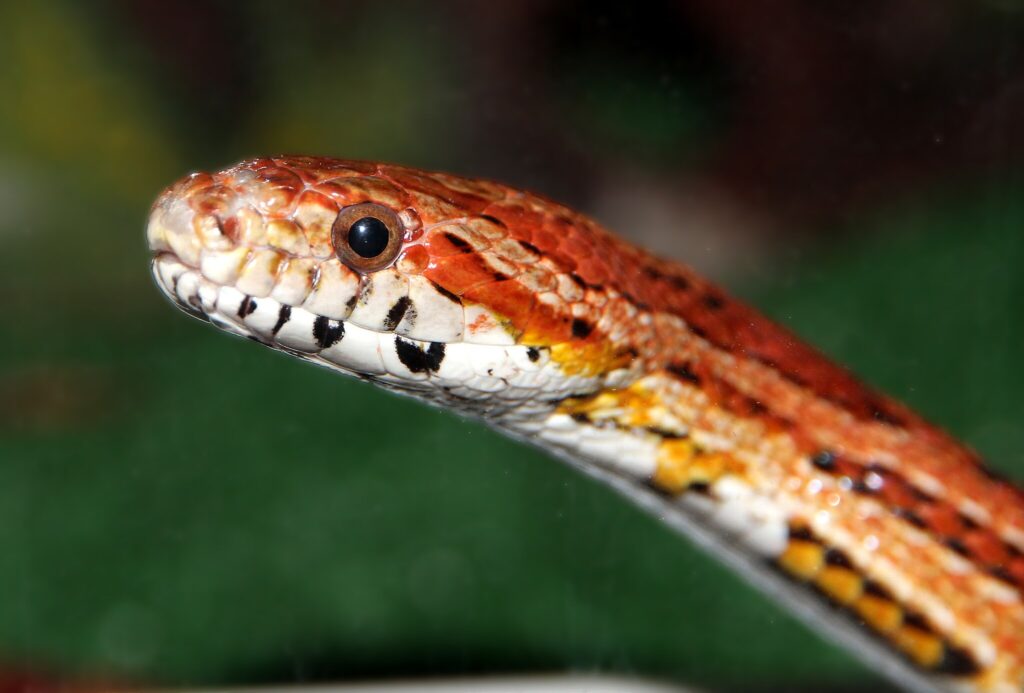
Corn snakes offer apartment dwellers an ideal combination of manageable size, striking appearance, and easygoing temperament. Typically growing to 3-5 feet in length, these non-venomous colubrids require relatively modest enclosures that can fit comfortably even in smaller living spaces. Their remarkable color variations—ranging from classic orange and red patterns to sophisticated morphs like albino, caramel, and lavender—allow them to serve as living art pieces that complement your apartment’s aesthetic. Corn snakes are known for their docile nature and rarely display aggressive behaviors, making them suitable even for reptile novices living in close quarters. Their feeding schedule of one appropriately-sized mouse every 7-10 days minimizes the prey storage needs that might otherwise challenge apartment dwellers with limited freezer space.
6. Russian Tortoises: Long-Lived, Low-Profile Pets
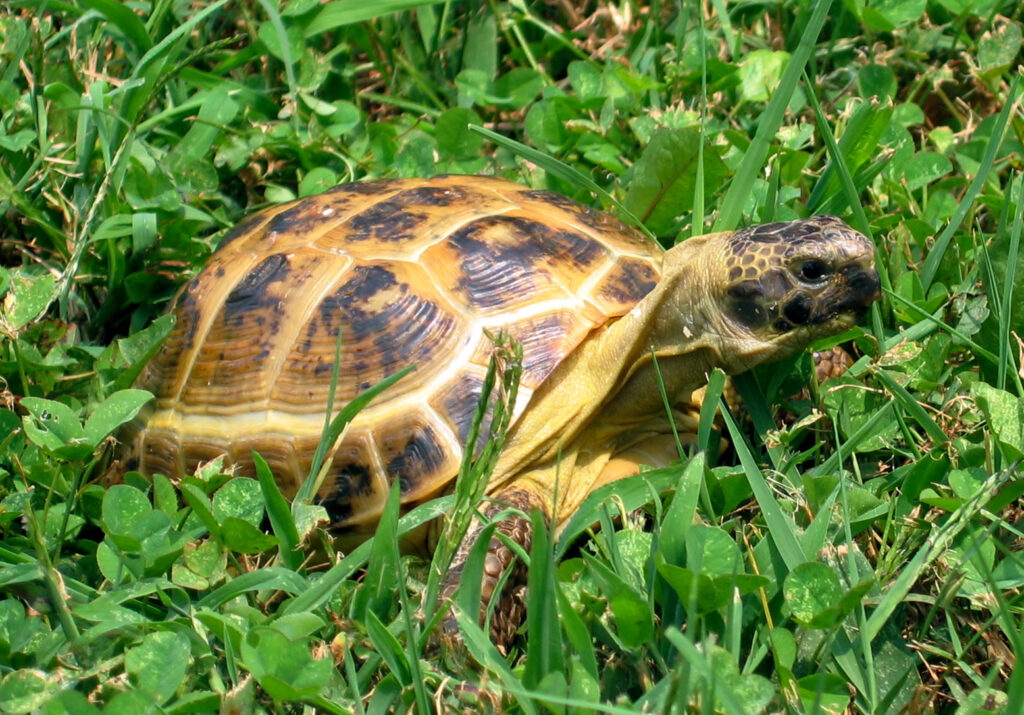
Russian tortoises represent an excellent choice for apartment residents seeking a long-term reptilian companion with minimal space requirements. These hardy chelonians typically reach only 8-10 inches in shell length, making them one of the smaller tortoise species available in the pet trade. Their predominantly herbivorous diet consists mainly of grocery-store greens and vegetables, eliminating the need to store live prey in your apartment. Russian tortoises are naturally quiet and produce minimal odor when their enclosures are properly maintained, ensuring peaceful coexistence with neighbors in close-quarters living situations. Perhaps most appealingly for committed pet owners, these tortoises can live for decades with proper care, offering a lifetime companionship that moves easily from apartment to apartment as your living situation evolves.
7. Western Hognose Snakes: Compact and Charismatic
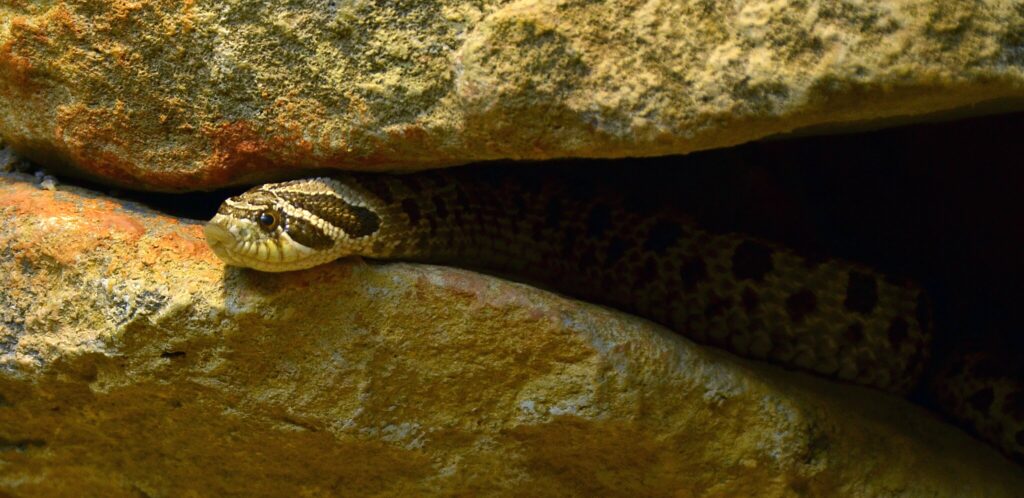
Western hognose snakes pack tremendous personality into their modest frames, rarely exceeding 2-3 feet in length, which makes them perfect reptilian companions for space-conscious apartment dwellers. Their upturned snouts and dramatic defensive displays (which include flattening their necks and hissing loudly) provide endless entertainment value despite being completely harmless bluffs. Hognoses require relatively small enclosures compared to many other snake species, with a 20-gallon tank typically sufficing for even adult specimens. Their specialized diet primarily consists of amphibians in the wild, but captive specimens readily accept frozen/thawed mice, simplifying feeding logistics in apartment settings. These snakes are known for their curious, active nature during daylight hours, creating engaging viewing opportunities without the noise or space requirements of traditional pets.
8. Gargoyle Geckos: Nocturnal Apartment Dwellers
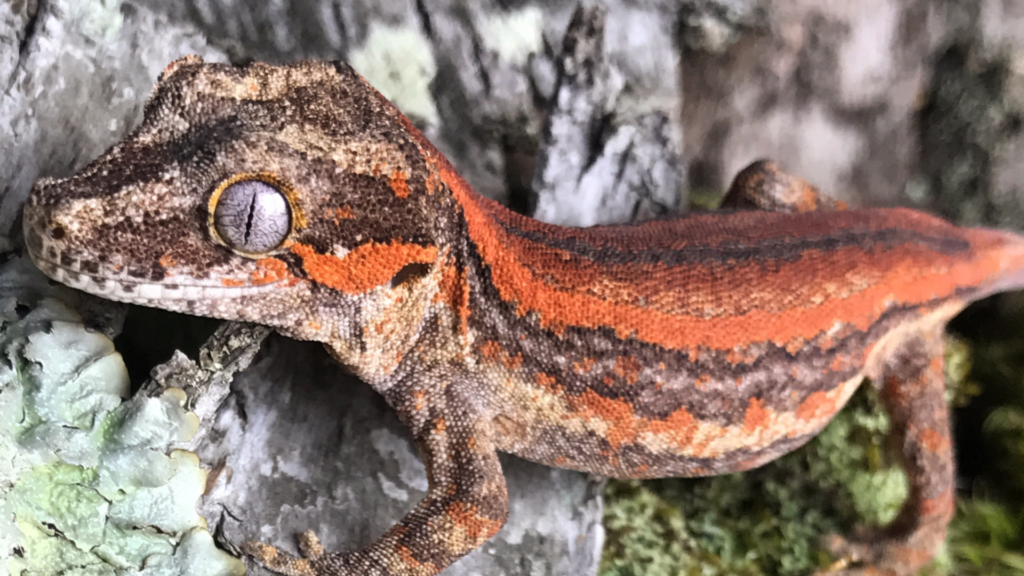
Gargoyle geckos offer apartment residents a fascinating nocturnal pet option that requires minimal space and generates virtually no noise. These distinctive-looking reptiles, characterized by their textured skin and ridge-like “horns,” typically reach only 7-8 inches in length, allowing them to thrive in vertical terrariums that prioritize height over floor space. Their care requirements align perfectly with apartment living limitations—they need no supplemental heating provided ambient room temperatures remain between 72-78°F, eliminating concerns about electricity usage or fire hazards from heating equipment. Gargoyle geckos primarily consume commercially available powdered diets mixed with water, complemented occasionally with soft fruits, creating a feeding routine that requires no live insect storage. Their nocturnal lifestyle means they’re most active during evening hours when many apartment dwellers have returned home from work, creating natural opportunities for observation and interaction.
9. Blue-Tongued Skinks: Friendly Lizards with Personality
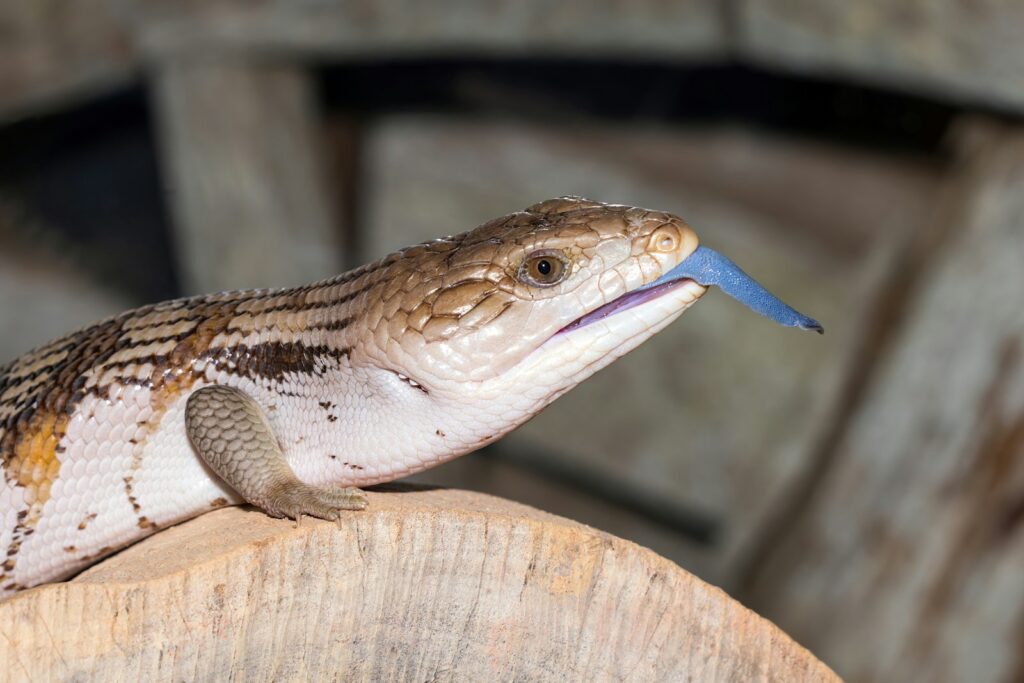
Blue-tongued skinks combine the interactive personality of a dog with the space-efficient requirements of a reptile, making them surprisingly suitable for apartment living despite their robust build. These lizards typically reach 18-24 inches in length, but their docile nature and handleability make them feel less imposing than their size might suggest. Unlike many reptiles that merely tolerate handling, blue-tongued skinks often genuinely enjoy human interaction and can form strong bonds with their caretakers over time. Their omnivorous diet consists of vegetables, fruits, and protein sources (including commercially available dog food), eliminating the need to store live insects or prey items in your limited apartment space. Blue-tongued skinks are primarily diurnal and spend much of their time basking or exploring their enclosures, creating an engaging visual centerpiece for apartment living spaces.
10. Kenyan Sand Boas: The Apartment-Sized Constrictors
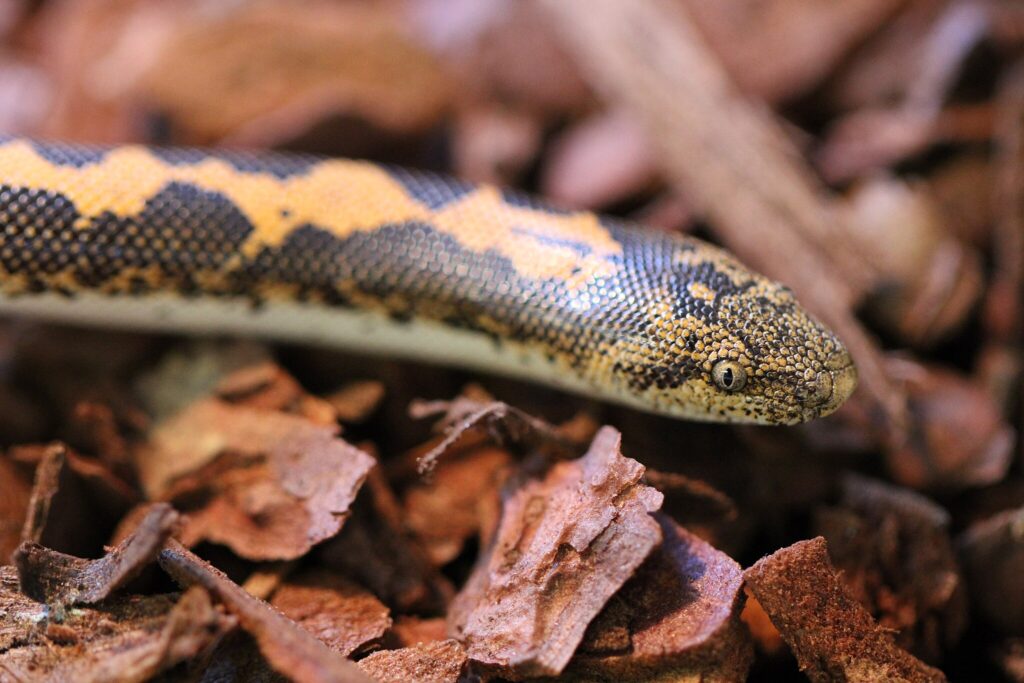
Kenyan sand boas represent one of the smallest constrictor species available in the reptile hobby, with females rarely exceeding 2-3 feet and males often staying under 20 inches, making them ideal for apartment settings where space constraints are significant. These stout-bodied snakes spend much of their time partially or completely buried in substrate, meaning they require relatively shallow enclosures that can easily fit on standard apartment furniture. Their ambush hunting strategy translates to minimal activity levels, reducing the need for elaborate enrichment features that might otherwise consume precious apartment space. Kenyan sand boas are remarkably docile when handled regularly, lacking the defensive temperament that characterizes many other boid species. Their feeding schedule of appropriately-sized prey items every 7-14 days (depending on age and size) minimizes the food storage requirements that might otherwise challenge apartment dwellers.
Essential Considerations Before Adopting an Apartment Reptile

Before bringing home any reptile, apartment dwellers must carefully evaluate several practical factors to ensure a successful pet ownership experience. First, thoroughly review your lease agreement for any specific prohibitions against exotic pets or reptiles, as some buildings have explicit policies against certain species regardless of their suitability for apartment living. Consider the long-term commitment involved, as many reptiles have lifespans measured in decades rather than years, potentially accompanying you through multiple moves and life changes. Assess your apartment’s climate control capabilities, as consistent temperatures are crucial for reptile health, and some buildings with centralized heating and cooling systems offer residents limited thermostat control. Finally, develop a relationship with an exotic veterinarian in your area before acquiring your reptile, as specialized veterinary care may be necessary during emergencies and for routine health maintenance throughout your pet’s life.
Creating Appropriate Enclosures in Limited Space

Maximizing vertical space represents one of the most effective strategies for reptile keeping in apartments, particularly for arboreal species like crested geckos and gargoyle geckos that naturally inhabit tall, narrow territories. Utilizing furniture-grade enclosures that double as end tables, nightstands, or entertainment centers allows reptile habitats to serve dual purposes in space-constrained environments. Front-opening terrariums offer significant advantages in apartments by allowing easy access for maintenance without requiring clearance above the enclosure for top-opening lids, enabling placement under shelves or in previously unusable spaces. For those keeping multiple smaller species like leopard geckos or hognose snakes, modular rack systems can house several animals in a minimal footprint while maintaining appropriate environmental parameters for each individual. Remember that properly sized and furnished enclosures aren’t just about physical constraints—they directly impact your reptile’s psychological well-being and overall health in the confined setting of an apartment.
Managing Reptile Care with Apartment Limitations

Apartment living presents unique challenges for reptile keepers that require creative solutions and careful planning. For feeding challenges, consider subscription-based feeder insect delivery services that ship precisely the amount needed for your pet each month, eliminating the need to breed or store live food in limited spaces. Install programmable thermostats and timers on heating and lighting equipment to maintain proper environmental conditions while preventing energy waste during your absence. Develop space-efficient quarantine protocols using collapsible containers that can be stored when not in use, ensuring you can safely introduce new animals or isolate sick ones despite space limitations. For vacation care, research reptile-knowledgeable pet sitters in your area well before planned absences, as traditional boarding facilities rarely accommodate exotic species, and many reptiles cannot be transported easily to friends’ homes during your travels.
Conclusion: Finding Your Perfect Apartment Companion
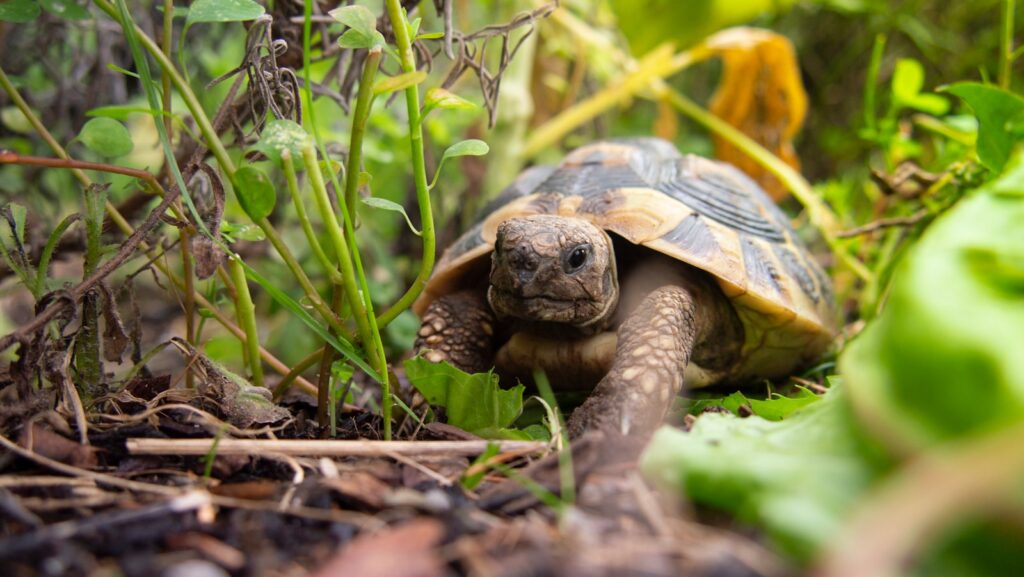
Reptiles offer apartment dwellers a unique opportunity to experience the joys of pet ownership without many of the challenges posed by traditional mammalian companions. From the friendly leopard gecko to the personable blue-tongued skink, there’s a scaly friend suited to nearly every apartment living situation and owner preference. The key to successful reptile keeping in apartments lies in careful species selection, thorough research into specific care requirements, and creative adaptation of limited space to meet your pet’s needs. Remember that while reptiles may require less daily attention than dogs or cats, they deserve the same level of commitment to proper husbandry and environmental conditions. With appropriate preparation and responsible ownership, these fascinating creatures can thrive in apartment settings while providing years of companionship and endless learning opportunities for their human caretakers.






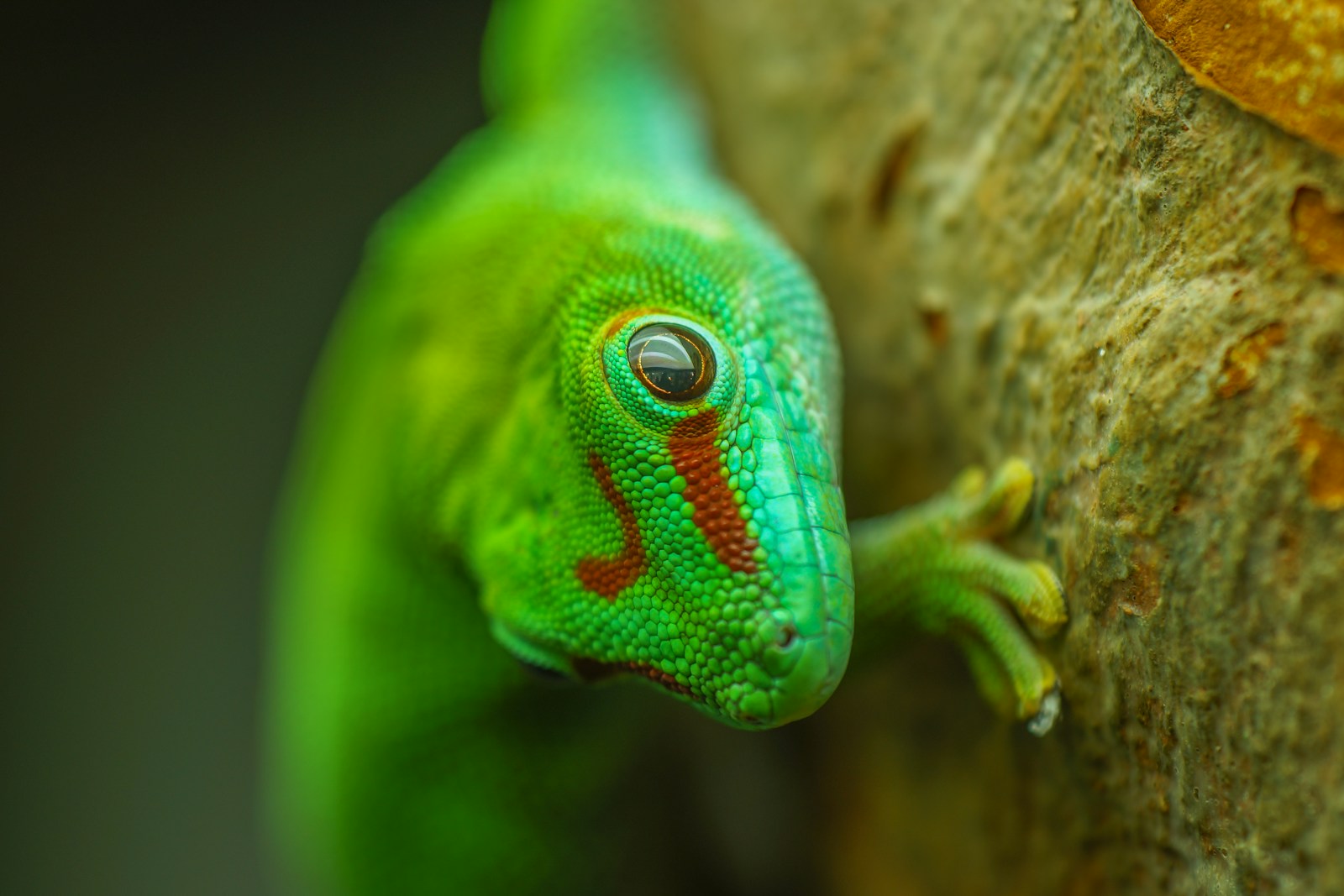
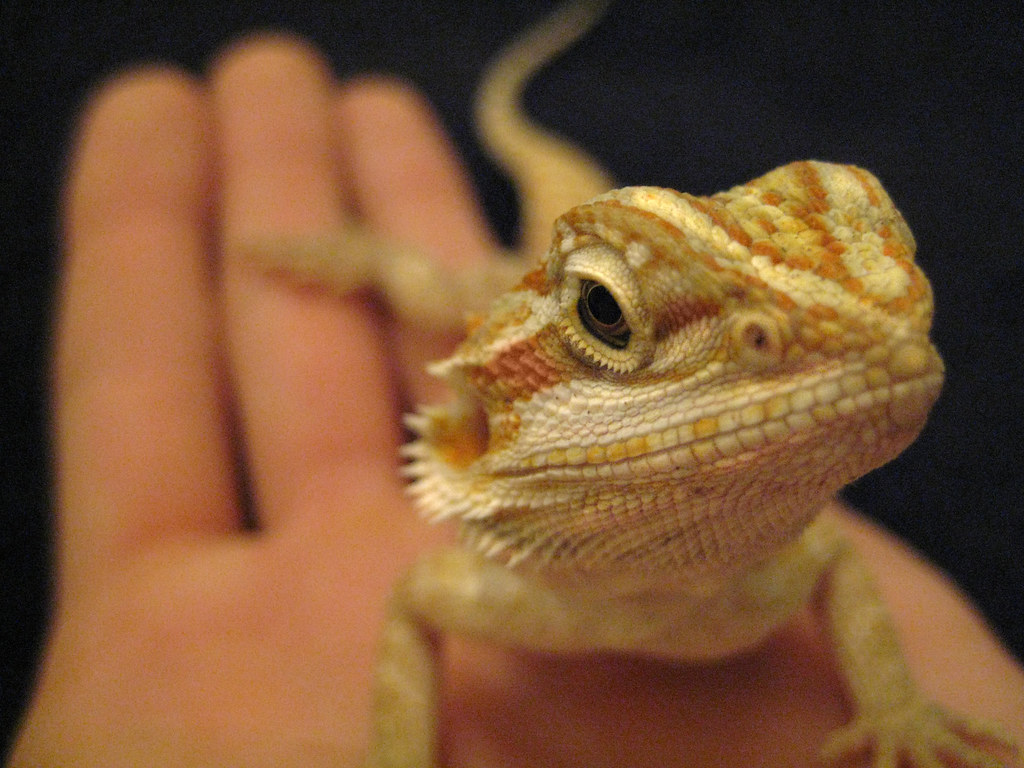


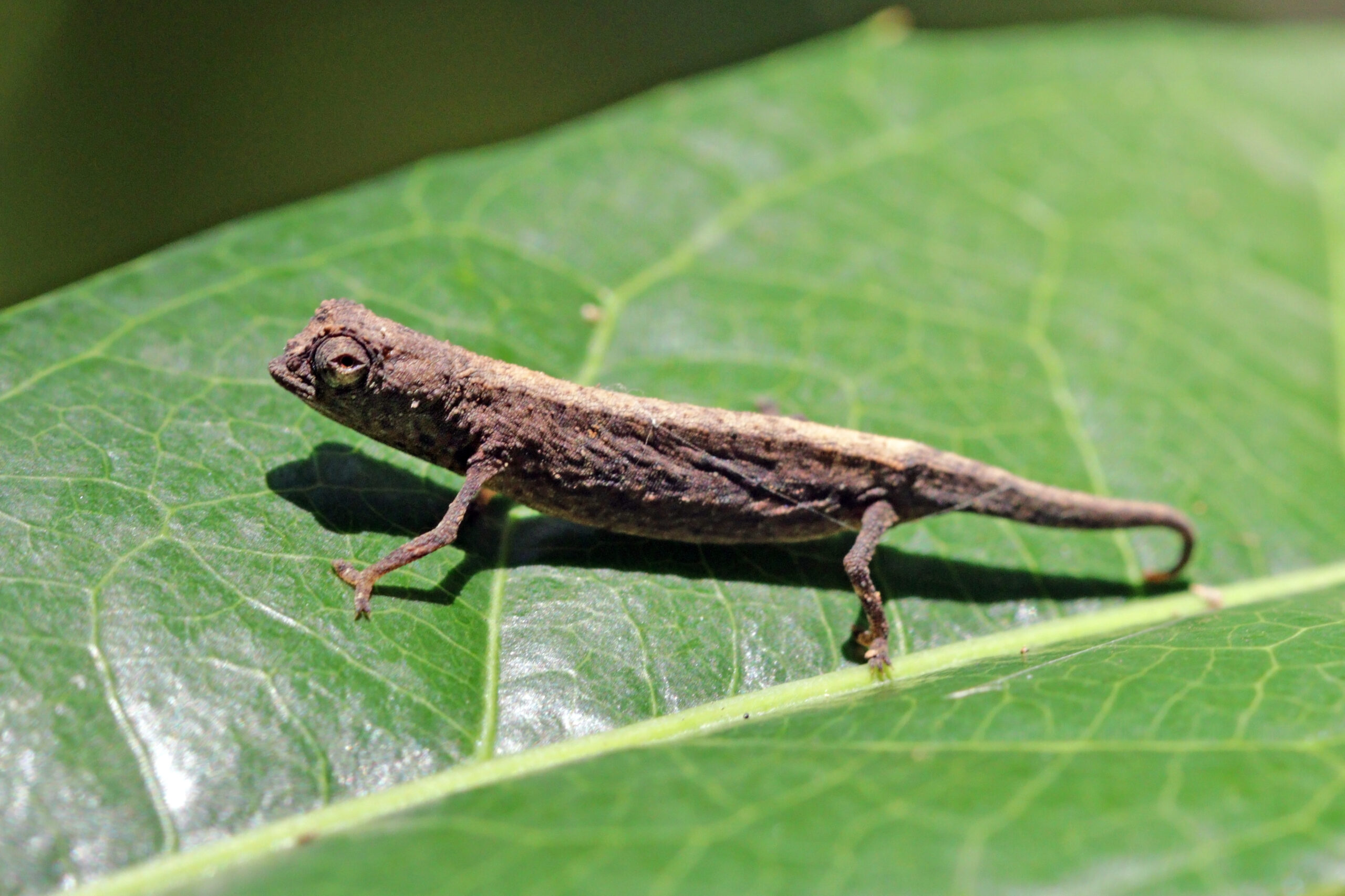




Leave a Reply